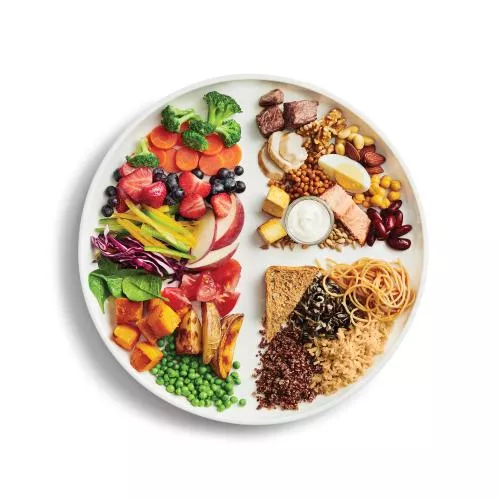There is no one perfect diet, nor one specific way of eating that is right for everyone. Most Registered Dietitians agree that the one term characterizing a healthy diet is “flexible”: your food choices should vary from meal to meal and day to day - depending on what food is available to you, how hungry you are, your individual health factors and level of physical activity, and other considerations.

As a place to start, Canada’s Food Guide (introduced in 2019) outlines a very basic pattern of healthy eating, which includes lots of colourful vegetables & fruit, whole grains, and protein foods like lean meats, poultry, fish, beans, tofu and dairy. Eating these foods, in roughly the proportion shown in the Guide (“half the plate” at each meal as vegetables and fruit) should give us approximately the amount of carbohydrates, protein, and fat that is thought to be ideal for the human body.
Reducing out intake of sugary beverages in favour of water as the drink of choice, is another important message from Canada’s Food Guide.
Because the new (2019) version of Canada’s Food Guide does not specifically recommend “Milk & Alternatives” as it did in previous versions, it is important to consider how to get sufficient calcium & VitaminD (through diet, supplements, or sun exposure)
Put Canada’s Food Guide into practice! This easy meal planning tool can help guide you towards healthy meals and snacks for one week.
There is a Food Centre (food bank) on campus, in the David Building at 2102DV. The best way to get up-to-date information (i.e. hours) is by looking at the postings on their door; or looking them up on Instagram @UTMSUfoodcentre. Information and how the Food Centre is run and hours of operation can change, but generally, food supplies for students (or staff/faculty) are available and easy-to-obtain. Email contact is food@utmsu.ca.
